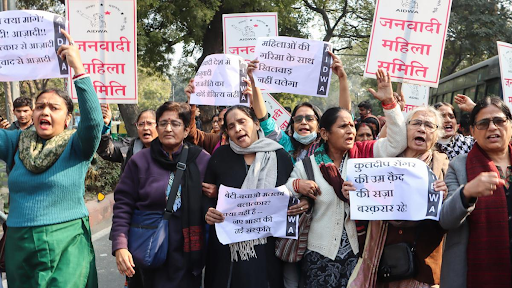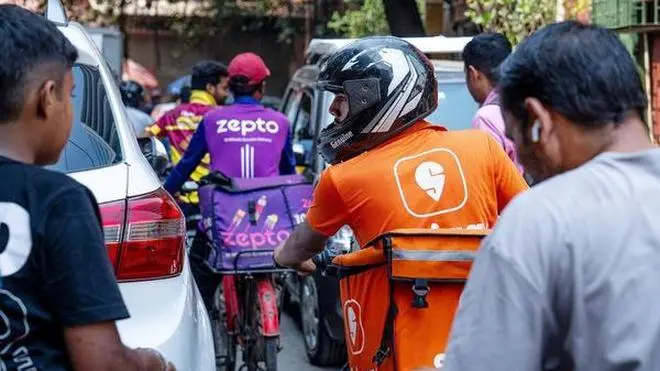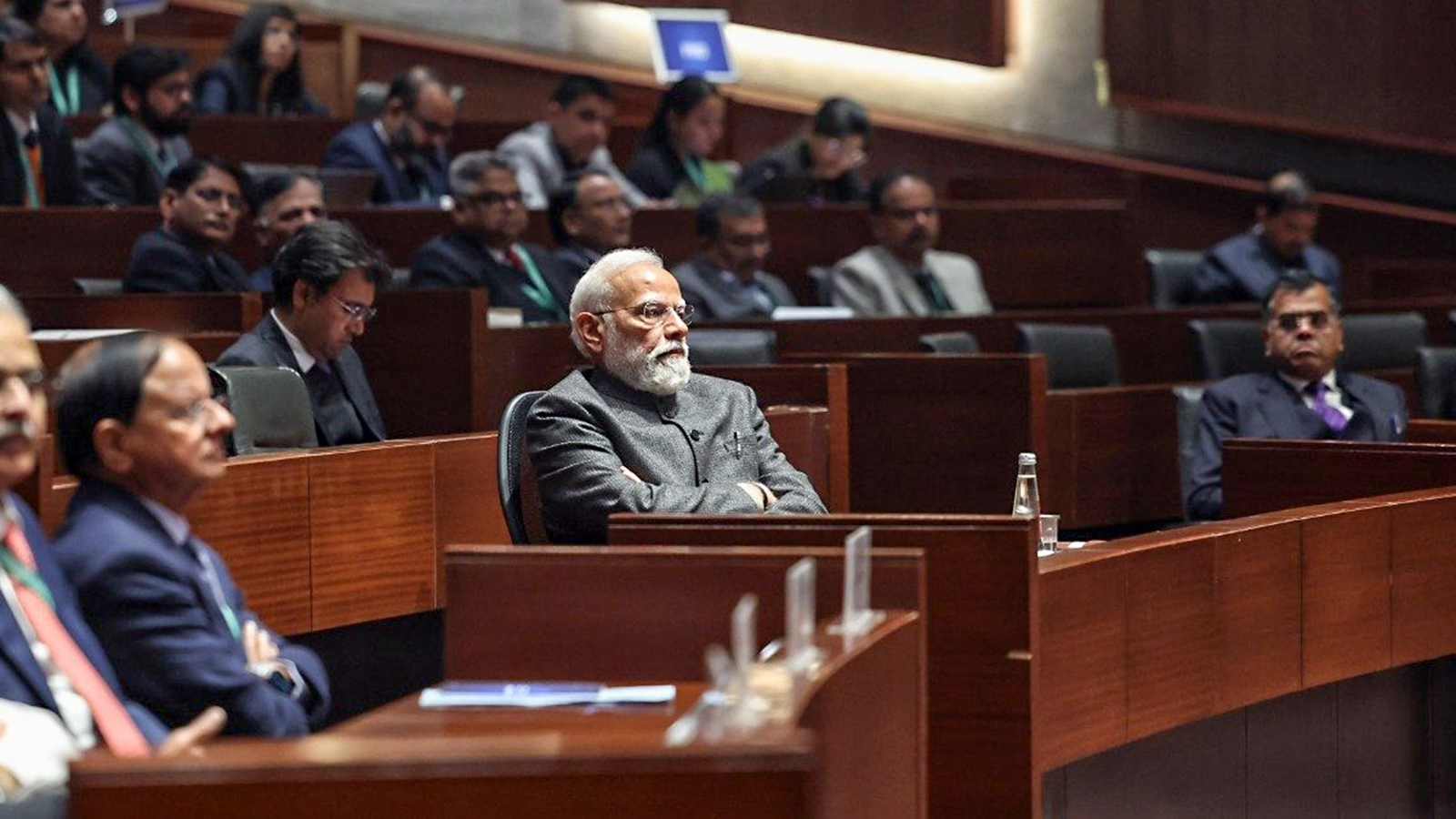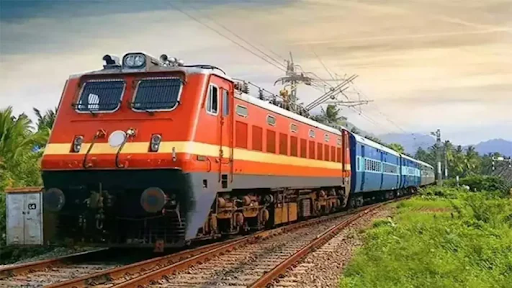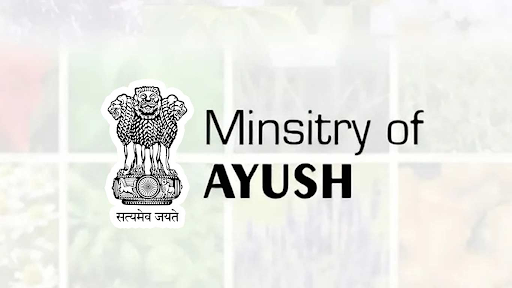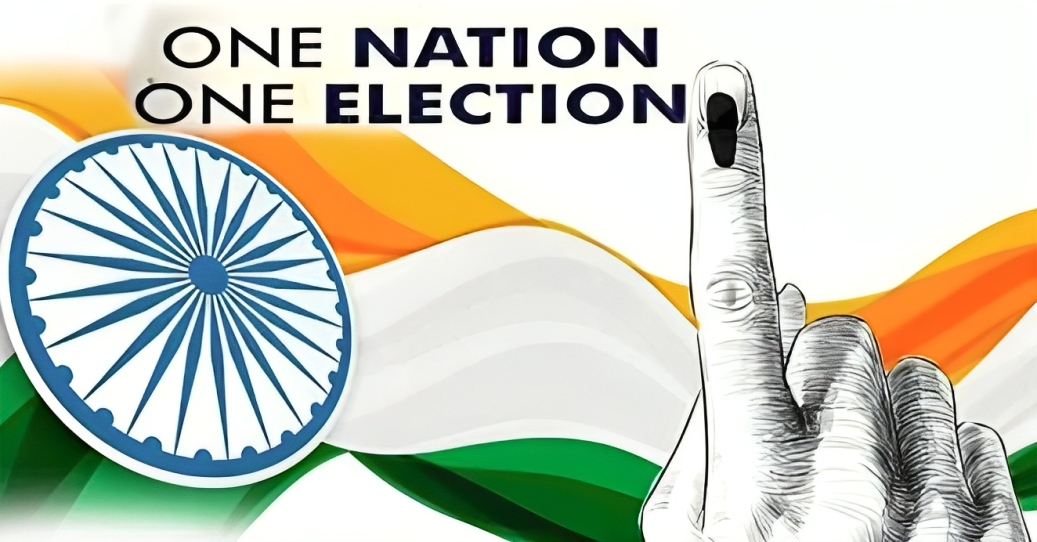
Copyright infringement not intended
Picture Courtesy: tamil.oneindia.com
Context: The Indian government has formed a committee led by former President Ram Nath Kovind to examine the possibility of implementing "one nation, one election". This initiative seeks to synchronize the timing of Lok Sabha (national) and state assembly elections in India.
One nation, one election
About
- "One nation, one election" is a concept aimed at synchronizing the timing of elections for various tiers of government in India, primarily the Lok Sabha (national parliament) and state legislative assemblies. The idea behind this concept is to streamline the electoral process, reduce election-related expenses, and ensure continuity in governance.

Background
Initial Simultaneous Elections
- When India gained independence in 1947, it initially held simultaneous elections for both the Lok Sabha (House of the People) and state legislative assemblies. This synchronization was in line with the democratic principles of the newly formed nation.
Divergence in Election Cycles
- Over the years, India's political landscape evolved, leading to a divergence in the election cycles of different states. Changes in governments, political realignments, and constitutional issues disrupted the initial practice of simultaneous elections.
Past Recommendations
- The concept of "one nation, one election" has been considered and recommended by various governmental and non-governmental bodies. For instance:
- In 1983, the Election Commission of India suggested working towards simultaneous elections as a way to improve the efficiency of the electoral process.
- In 1999, the Law Commission of India recommended the synchronization of elections to Lok Sabha and state assemblies, stating the need to "go back to the situation where elections to Lok Sabha and all the Legislative Assemblies are held at once."
Recent Developments
- After the election in 2019, the Prime Minister emphasized the idea of "one nation, one election." He proposed the formation of a committee to examine the feasibility of holding simultaneous elections and announced his intention to hold discussions with various political parties to build consensus on the issue.
- In 2018, the Law Commission issued a draft report acknowledging the need for constitutional amendments and legal changes to facilitate simultaneous elections. The draft report recommended that all elections due in a calendar year should be conducted together.
- As of 2023, the concept of "one nation, one election" continues to be a subject of debate and discussion in India's political landscape. Opposition parties remain divided on the issue, with concerns about its impact on regional politics and the prominence of national leaders in the electoral process.
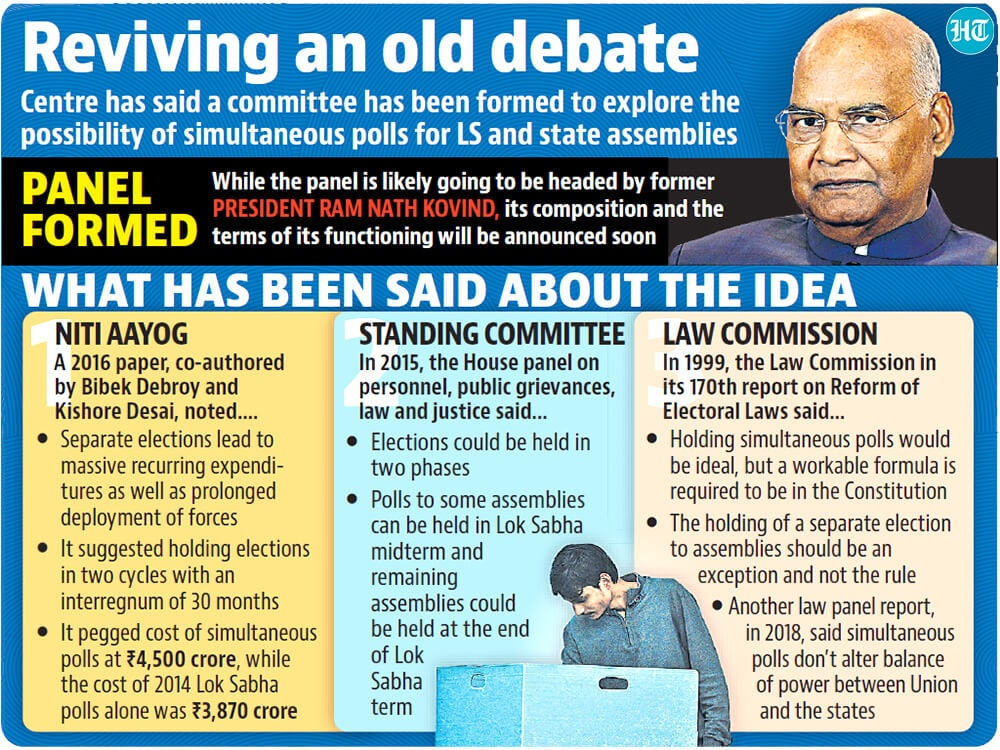
Picture Courtesy: Hindustan Times
Features of "one nation, one election"
Synchronization
- The central feature of "one nation, one election" is the synchronization of elections for both the Lok Sabha (the lower house of India's national parliament) and state assemblies. Currently, elections for the Lok Sabha and state assemblies are held at different times, often leading to a continuous cycle of elections across various states and the national level.
- Synchronization means that elections for these two levels of government would be conducted simultaneously on a single day or within a closely coordinated time frame.
Common Election Cycle
- “One nation, one election" proposes the establishment of a common election cycle for all state assemblies and the Lok Sabha. This common election cycle implies that elections at both the national and state levels would be scheduled together at fixed intervals, typically every five years.
- The goal is to reduce the frequency of elections and create a more streamlined and predictable electoral schedule.
Amendments
- Implementing "one nation, one election" would require significant amendments to India's legal and constitutional framework:
- Constitutional Amendments: Changes to the Indian Constitution may be necessary to align the terms of state legislative assemblies with that of the Lok Sabha, ensuring that elections can be held concurrently. This would likely involve altering articles related to the tenure of state assemblies.
- Representation of the People Act 1951: Amendments to this act would be required to accommodate the synchronized election schedule and address logistical and legal issues that arise due to simultaneous elections. The act governs the conduct of elections in India.
- Rules of Procedure: The rules governing the functioning of the Lok Sabha and state legislative assemblies may need to be modified to accommodate the new election cycle and procedures associated with simultaneous elections.
- These amendments are crucial for legalizing and implementing the concept of "one nation, one election." They would require thorough deliberation, consensus-building among lawmakers, and a rigorous legislative process to enact the necessary changes.
Significance of "one nation, one election"
Reduced Election Costs
- Conducting elections at different times for the Lok Sabha and state assemblies involves substantial financial expenditure for the government, political parties, and candidates.
- By holding elections simultaneously, there would be a significant reduction in overall election-related costs. This includes expenses for security, transportation, polling staff, and campaigning.
- A single election cycle every five years would allow for better financial planning and allocation of resources, reducing the burden on the exchequer.
Continuous Governance
- The enforcement of the Model Code of Conduct (MCC) during election periods can disrupt the normal functioning of both the central and state governments.
- Frequent elections at different levels result in a continuous cycle of MCC enforcement, leading to potential policy paralysis as the government refrains from announcing new policies or projects during the MCC period.
- Simultaneous elections would reduce the frequency of MCC enforcement, ensuring that governance is not disrupted by election-related restrictions. This could lead to more effective and uninterrupted governance.
Efficient Use of Resources
- Holding multiple elections at different times requires a substantial deployment of essential manpower and resources, including security personnel, administrative staff, and electoral machinery.
- Simultaneous elections would enable more efficient use of these resources. Staff and security forces could be deployed more strategically, and electoral machinery could be streamlined.
- This efficient allocation of resources would not only reduce the burden on government agencies but also enhance the overall management of elections.
These arguments emphasize the potential benefits of "one nation, one election" in terms of cost savings, uninterrupted governance, and resource efficiency. Supporters argue that these advantages would contribute to a more effective and streamlined electoral process in India.
Challenges in Implementing "One Nation, One Election"
Constitutional Amendments
- One of the foremost challenges in implementing "one nation, one election" is the requirement for significant constitutional amendments. These amendments would need to address various aspects of election scheduling, terms of legislatures, and related provisions. To enact these changes, the Constitution of India mandates that at least 50% of the states must ratify the amendments, making it a complex legal and political process.
- Achieving consensus among diverse states with varying political interests can be challenging.
Logistical Complexity
- Implementing simultaneous elections in India, given its vast size, diversity, and federal structure, is an intricate and challenging task. Coordinating elections across all states and union territories, each with its unique political landscape and regional dynamics poses significant logistical complexities.
- Ensuring uniformity in election schedules, voter lists, and campaign periods across the country can be a daunting administrative challenge.
- Critics argue that such complexity could lead to operational issues, delays, and potential disputes, undermining the efficiency of the electoral process.
Dominance of National Parties
- Critics of "one nation, one election" argue that this system could favour nationally dominant parties at the expense of regional players.
- National parties tend to have more extensive resources and a broader presence, potentially overshadowing regional parties. This could affect the diversity of political representation in India, which is known for its regional and linguistic diversity.
Government Stability
- Another critical challenge is the potential impact on government stability. In a scenario where any government, be it at the state or national level, collapses before completing its full term, simultaneous elections could lead to political instability. The need for fresh elections at all levels simultaneously could disrupt governance and create uncertainty. This challenge emphasizes the importance of ensuring that governments remain stable throughout their terms.
Legal and Procedural Changes
- Implementing "one nation, one election" would require comprehensive changes to existing election laws and procedures, including the Representation of the People Act, 1951, and the Rules of Procedure of the Lok Sabha and state assemblies. Ensuring that these legal and procedural changes are well-drafted and effectively implemented is a significant challenge.
Public Awareness and Education
- To successfully transition to simultaneous elections, there would be a need for extensive public awareness and education campaigns. Citizens would need to understand the changes in election cycles, voting procedures, and the implications of their votes at multiple levels of government.
Political Consensus
- Achieving political consensus among various political parties is essential for the successful implementation of "one nation, one election." Currently, opposition parties have expressed divided opinions on the concept, and building consensus on such a significant change in the electoral system can be a challenging task.
Funding and Resources
- Coordinating simultaneous elections would require a substantial allocation of funds and resources. Ensuring that the necessary financial and logistical resources are available to conduct elections across the country simultaneously is a logistical challenge.
Security and Law Enforcement
- Maintaining security during simultaneous elections, particularly in regions with security concerns, is a significant challenge. Law enforcement agencies would need to manage and coordinate security measures effectively to ensure the safety of voters and the integrity of the electoral process.
Impact on Regional Issues
- Simultaneous elections could potentially shift the focus of political campaigns away from regional issues and towards national agendas. This shift could impact the representation of regional concerns and issues in the political discourse.
Addressing these challenges would require careful planning, collaboration among political parties, and a well-structured approach to constitutional amendments and legal changes. Simultaneous elections are a complex undertaking, and policymakers must consider these challenges when evaluating the feasibility and implications of such a system.
Way Forward for Implementing "One Nation, One Election"
Political Consensus
- Building a broad political consensus on the concept of "one nation, one election" is paramount. The government should engage in dialogues and consultations with various political parties to address their concerns and seek their input. A consensus-driven approach is essential to garner support for this significant electoral reform.
Legal Amendments
- To move forward, the government must initiate the process of drafting and proposing the necessary constitutional amendments and legal changes. This includes addressing issues related to no-confidence motions and government stability. Legal experts, lawmakers, and constitutional authorities should collaborate to ensure that the proposed amendments are well-considered and well-crafted.
Pilot Projects
- Before implementing simultaneous elections nationwide, it may be prudent to conduct pilot projects or trials in selected states or union territories. These pilot projects can serve as testing grounds to assess the feasibility, identify challenges, and fine-tune the logistical aspects of simultaneous elections. The lessons learned from these trials can inform the broader implementation strategy.
Public Awareness Campaigns
- To ensure that citizens are well-informed about the benefits and implications of simultaneous elections, comprehensive public awareness campaigns should be conducted. These campaigns can help citizens understand the changes in the electoral process, the importance of their votes at various levels of government, and the potential advantages of synchronized elections.
Parliamentary Approval
- Any proposed constitutional amendments and legislative changes must go through the established parliamentary approval process. This involves debates, discussions, and voting in both houses of Parliament. Lawmakers should have the opportunity to scrutinize and provide input on the proposed reforms, ensuring a transparent and democratic decision-making process.
Consultation with State Governments
- Since states play a significant role in the electoral process, it is crucial to consult with state governments and seek their input on the implementation of simultaneous elections. State governments may have unique concerns and considerations that need to be addressed in the reform process.
Expert Committees
- Establishing expert committees comprising legal experts, political scientists, election commission officials, and representatives from various political parties can help analyze the technical and practical aspects of implementing simultaneous elections. These committees can provide valuable recommendations and insights.
Gradual Transition
- Rather than implementing simultaneous elections abruptly, a gradual transition approach could be considered. This could involve synchronizing elections in phases, starting with a subset of states and gradually expanding to cover the entire country. Such an approach allows for a smoother transition and better management of resources and logistics.
International Best Practices
- India can learn from international best practices in implementing synchronized elections. Studying how other countries have managed simultaneous elections can provide valuable insights into the challenges and solutions.
Continuous Evaluation
- After the initial implementation, a system of continuous evaluation and feedback should be established. This will help identify any issues that arise during the transition and allow for timely adjustments and improvements.

Conclusion
- "one nation, one election" is a significant electoral reform proposal in India. While it offers potential benefits such as cost reduction and governance continuity, addressing constitutional and logistical challenges and gaining political consensus is critical for its successful implementation. The way forward involves careful planning, legal amendments, and transparent public engagement.
Must Read Articles:
One Nation One Election: https://www.iasgyan.in/ig-uploads/pdf/One_Nation_One_Election.pdf
|
PRACTICE QUESTION
Q. What are the key features of the "One Nation, One Election" concept, and why is it considered significant in India's electoral landscape? What challenges does the implementation of simultaneous elections pose, and what steps can be taken to address these challenges and move forward with this electoral reform?
|
https://indianexpress.com/article/explained/govt-committee-simultaneous-elections-explained-8918921/








